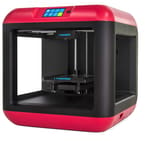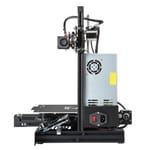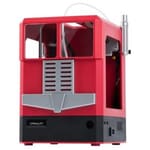The beginner-friendly Flashforge Finder launched almost half a decade ago, but it’s managed to stay relevant thanks to its usability, quality, and approachability.
It’s also got a fancy new upgrade, the Finder 2.0, which Flashforge released towards the end of 2018. Though there are cheaper beginner 3D printers out there, this sturdy little guy has several features which set it apart and misses several that would be handy in a beginner-friendly printer.
Priced at under $400, it’s significantly more expensive than a Creality Ender 3, but it’s more sophisticated — offering fancy perks like WiFi connectivity and a color touchscreen — and is easier to use for first-timers. It’s also relatively expensive compared to similarly priced — but more capable — Chinese 3D printers geared towards beginners, like the Creality CR-100.
Verdict
Pros
- Clean design
- Easy to use
- Clear touchscreen
- Removable build plate makes it easier to take out prints
- Quiet
- Reliable
- Handy overhead light and good visibility of prints
Cons
- Very small build volume
- Bed not heated (sometimes causes warping)
- No automatic bed leveling
- Filament cartridge is too small for most non-Flashforge spools
- Only prints PLA (can also handle PETG to some extent, but only for small parts)
- Support structures are impossible to fully remove
Verdict
For an introductory 3D printer, or a 3D printer for kids, the Flashforge Finder covers almost all the bases. This little guy comes fully assembled and ready to (not) make some noise. It prints away quietly and only chirps merrily when it turns on or when other particularly noteworthy events occur. The printer even boasts WiFi connectivity, which is easy to set up and use and a generally more high-end feature. Its prints, too, are very good and are reliably churned out.
Where the Finder flounders is with its tiny print bed, which limits the size of prints substantially. Though it’s an excellent printer to ease you into the world of 3D printing, once you’ve gotten used to it and are eager to experiment more, it will be time to upgrade to something larger with a heated bed that can handle more material types.
Additionally, at its price, certain important features are missing, like filament detection, something which the Finder’s website says it has, but doesn’t. It also lacks auto bed leveling which would be useful to beginners.
Design
Safety
The Finder only prints in non-toxic PLA, which means you don’t have to worry about toxic fumes or any associated risks of printing with materials like ABS. It also has all the heated elements — like the nozzle — covered so they’re hard to accidentally touch. Lastly, the wires are all hidden away so they can’t catch on anything.
(No) Filament Detection
Though on Flashforge’s website it boasts the Finder has “filament-run-out detection,” this is no longer the case. Its filament detection used to be in the enclosed filament box, but customers complained that when they used other filament spools that were larger than the Flashforge ones, they had to keep them outside of the enclosure, which set off the filament detection.
Touchscreen
This 3.5-inch touchscreen is extremely clear and easy to use. When you first turn on the printer it gives you three options to select from, and from there you’re given more selections. It makes finding what you’re looking for simple and it’s very intuitive.
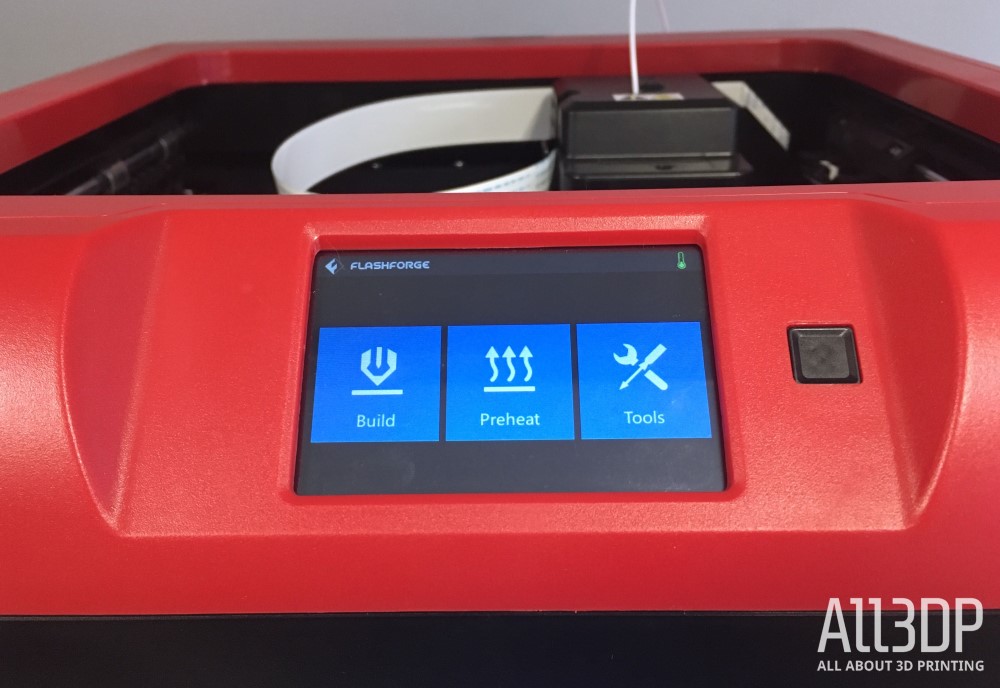
WiFi connectivity
For a small beginner’s printer, this is an exciting feature — one that not even the mighty Prusa offers. WiFi connectivity means you can choose a print, send it to your printer and keep an eye on its printing progress. It’s easy to connect your printer to WiFi and then connect it to your computer and it saves you the hassle of having to get up and manually set up a print. (Of course, you can also do this too if you’d like and there is a spot for a USB, though the printer doesn’t come with a USB stick.)
Quiet to use
This little fella is quiet — minus its cheerful chirping to let you know it’s on and ready to print. This means you can keep it in a common space in your home without it driving you crazy.
Removable build plate
This removable build plate is easy to take on and off and — unless you’re printing something with a large base — is easy for prints to adhere to.
Manual Bed Leveling
Flashforge tries to market their manual bed leveling (which is assisted by a retractable switch) as a feature, boasting that it actually offers “more precise and easier calibration.” While this isn’t the worst system, it’s definitely more complicated for beginners and isn’t very reliable. Auto bed leveling would be preferred.
Printing
Overall, the Flashforge Finder has been surprisingly fun to print with. It’s reliable and its prints are decent. It handles fine detail well and produces smooth surfaces. Where it falters is when using supports. They’re incredibly challenging to get off entirely and leave a rough residue behind.
That said, let’s take a look at some of the Finder’s finest (and not so fine) handiwork.
3DBenchy
We printed the classic torture test 3DBenchy with the supplied proprietary Slicer FlashPrint. It turned out great, with only some minor, common flaws.
When we printed it using standard Cura settings, however, it wasn’t as lovely and was scarred with small zits and layering.
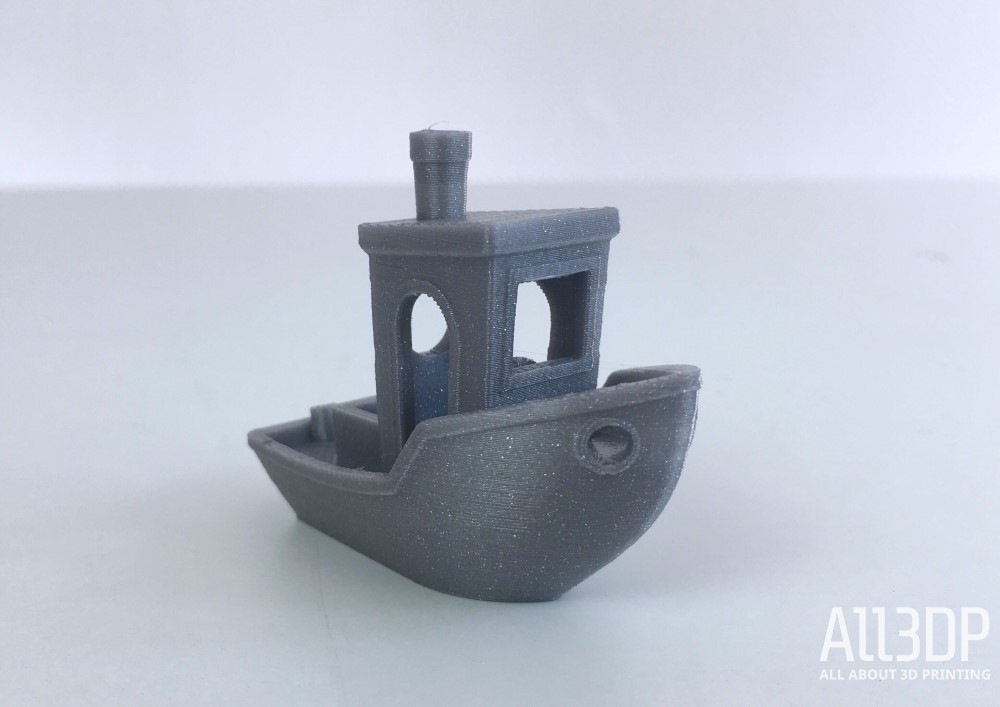
Autodesk Kickstarter Test
Next up was the Autodesk Kickstarter test, which looks at an FDM printer’s precision. The Flashforge Finder achieved the following results:
- Dimensional Accuracy: 4 of 5 points
- Fine Flow Control: 2.5 of 5 points
- Fine Negative Features: 4 of 5 points
- Overhangs: 2 of 5 points
- Bridging: 4 of 5 points
- XY Resonance: 0 of 2.5 points (ringing detectable)
- Z-Axis Alignment: 2.5 of 2.5 points (no layer registration effect visible)
Overall, the printer scored 19 out of a possible 30 points. (For comparison, a Prusa i3 MK3S scores 24.5 on this test.)
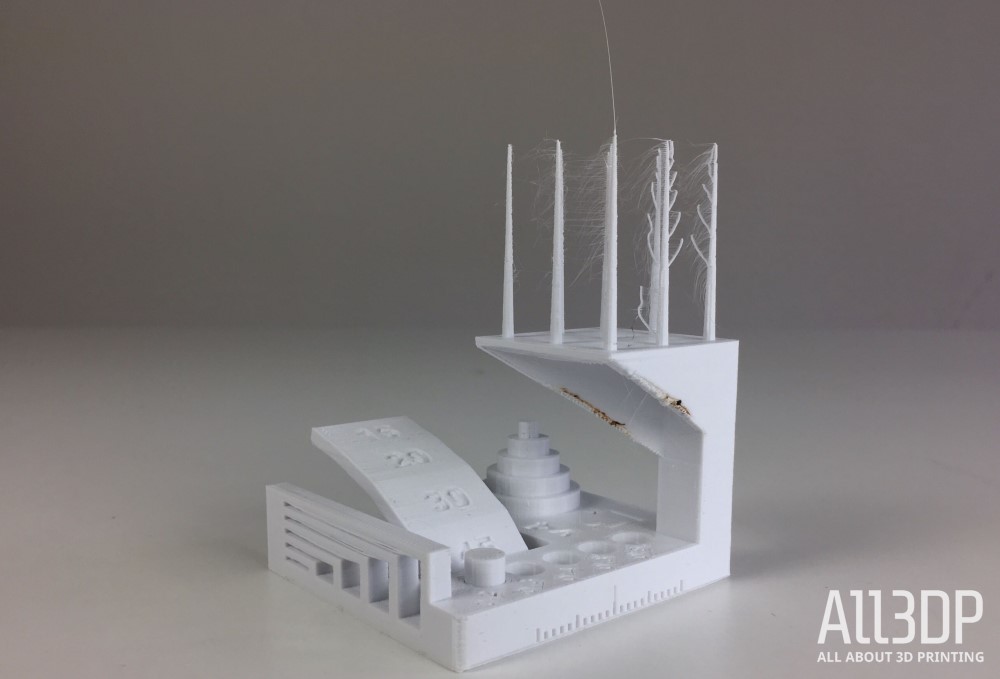
Fun Prints
Because this printer is geared towards beginners and kids, we tried printing a lot of toys on it. From flying PLA helicopters to more delicate PETG catapults, the Finder had no problem whipping out a variety of fun prints.

Where it struggled was with supports. A “big” teddy bear (it’s actually quite small, but is as big as we could make it on the Finder) has beautiful smooth curves and is truly an excellent print — if it weren’t for the crusty remains of supports we couldn’t get off. Flashforge also put supports on the bear’s tie, which we couldn’t get all off and ruined the fine details.
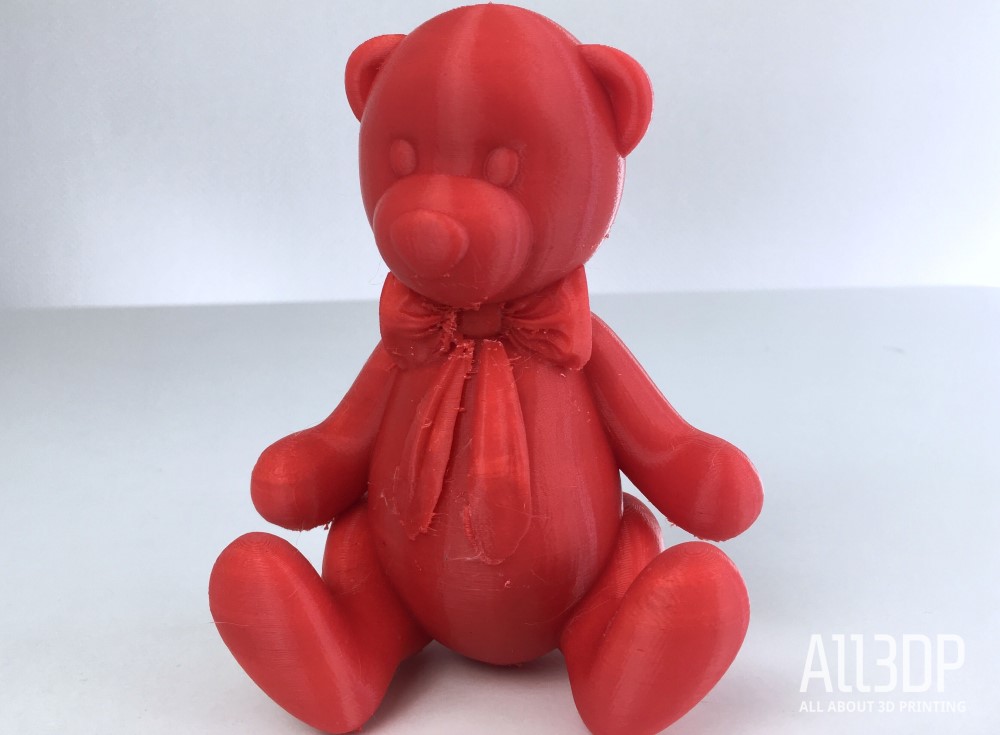
Same goes for the Space Man print, which needed supports under the car, but got supports everywhere in the default settings. This quickly became messy. Part of the problem is when you use supports it’s a little too liberal with them. The other problem is when you use supports they are just really tough to altogether remove without gouging the print itself.
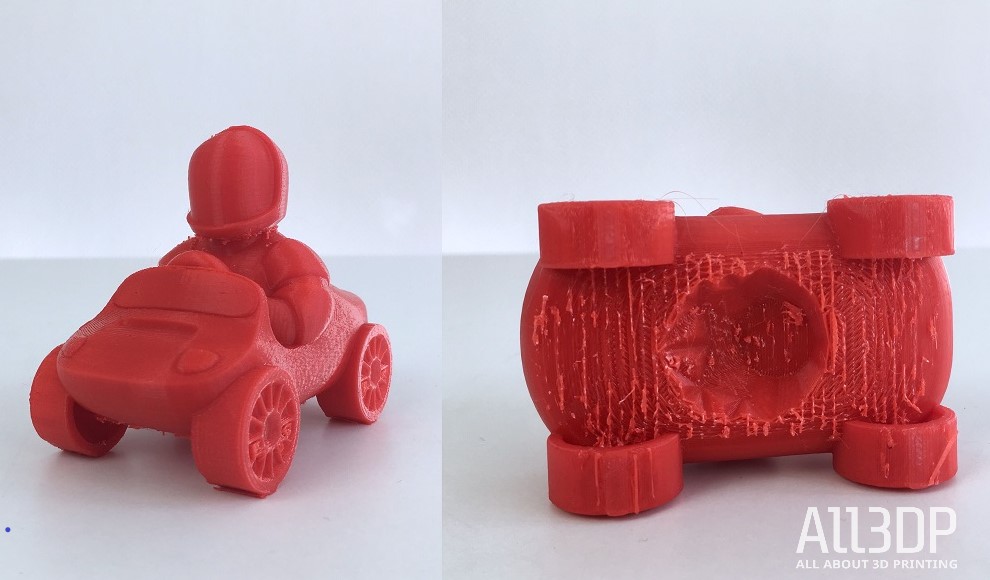
And again, with this creepy articulated baby. However, the printer handled all the articulated joints exceptionally well, so as long as you don’t turn the baby over onto its stomach, you can’t tell that the support structures ruined it.

Software: FlashPrint
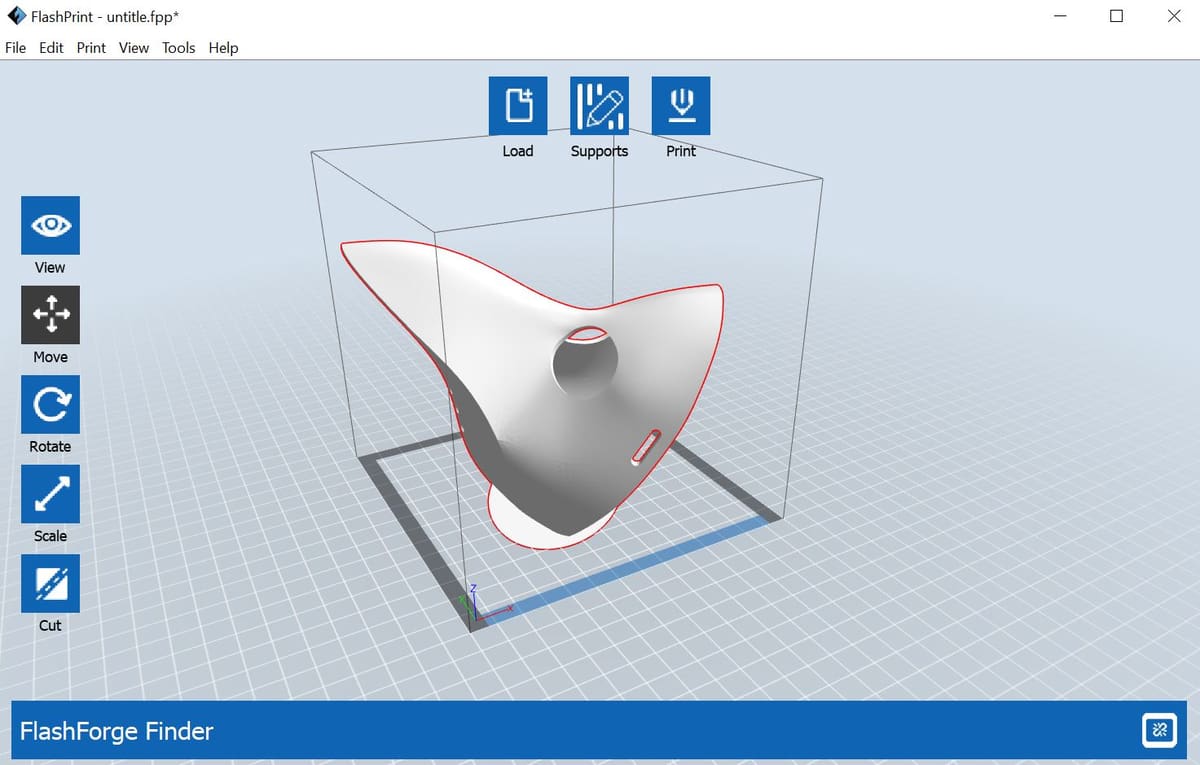
Once you get through the initial hassle of downloading FlashPrint, a rather complicated process that involved first downloading WinRAR before being able to open the FlashPrint file, the software is quite easy to use.
It clearly defines what it can do to an object: View, move, rotate, scale and cut (an especially useful feature because the build volume of this printer is so unimpressive). And by selecting each feature you can focus on that before moving onto the next.
When it comes to adding support structures, as mentioned previously, it does tend to be extremely heavy handed and this does — for the most part — ruin your prints.
However, in general, this is a spiffy software for beginners and it makes respectable prints — better prints, in fact, than when using Cura G-code. Unlike Cura though, it does not offer the same range of customizability, which isn’t a problem if you’re a beginner, but could quickly hold you back from attempting more ambitious prints.
Final Thoughts
If you’re a beginner looking to ease into 3D printing, the Flashforge Finder could be the one to start your journey with. It’s easy to use, boasts a sleek design and produces solid prints. The Finder is also safer to use than the average 3D printer because all the wires are neatly hidden away and the nozzle is protected. It’s by no means a perfect printer, but it offers some cool features, is built with the beginner in mind and dependably churns out prints.
However, if you’re not planning on staying a beginner for long and are hoping to eventually print with different materials and have larger prints, this printer will not grow up with you.
Tech Specs
Printer Specs
- Printing technology: Fused Filament Fabrication (FFF)
- Build volume: 140 x 140 x 140 mm
- Layer resolution: 100 ~ 500 microns
- Position precision: X,Y: 11 microns / Z: 2.5 microns
- Filament diameter: 1.75 mm
- Third-party filament: Yes
- Nozzle diameter: 0.4 mm
- Connectivity: USB, WiFi
- Heated plate: No
- Printable materials: PLA, PETG (for small prints)
- Frame material: Plastic
- Print bed: PEI sheet on glass
Software
- Software package: FlashPrint
- File types: OBJ/STL
- Supports: Windows, Mac, Linux
- Languages: English, French, German, Dutch, Polish, Korean
Physical Dimensions
- Frame dimensions: 420 x 420 x 420 mm
- Weight: 16 kg
Where to Buy
You can buy the Flashforge Finder from the following vendors:
Alternate Picks
You may also be interested in the following printers:
Creality Ender 3 Pro
The Ender 3 Pro is an excellent and affordable tool for makers, hobbyists, tinkerers, and to some degree even for educated beginners. And if you are willing to spend some time and give the printer some tender loving care, it’s capable of delivering astonishing quality prints that put pricier printers to shame.
Creality CR-100
The CR-100 by Chinese manufacturer Creality is a compact nugget of a printer designed to make 3D printing accessible for kids. It boasts a fun design and easy-to-use features like automatic bed leveling and a touchpad and it’s priced at under $200.
License: The text of "Flashforge Finder Review: Best 3D Printer for Beginners 2020" by All3DP is licensed under a Creative Commons Attribution 4.0 International License.
CERTAIN CONTENT THAT APPEARS ON THIS SITE COMES FROM AMAZON. THIS CONTENT IS PROVIDED ‘AS IS’ AND IS SUBJECT TO CHANGE OR REMOVAL AT ANY TIME.
